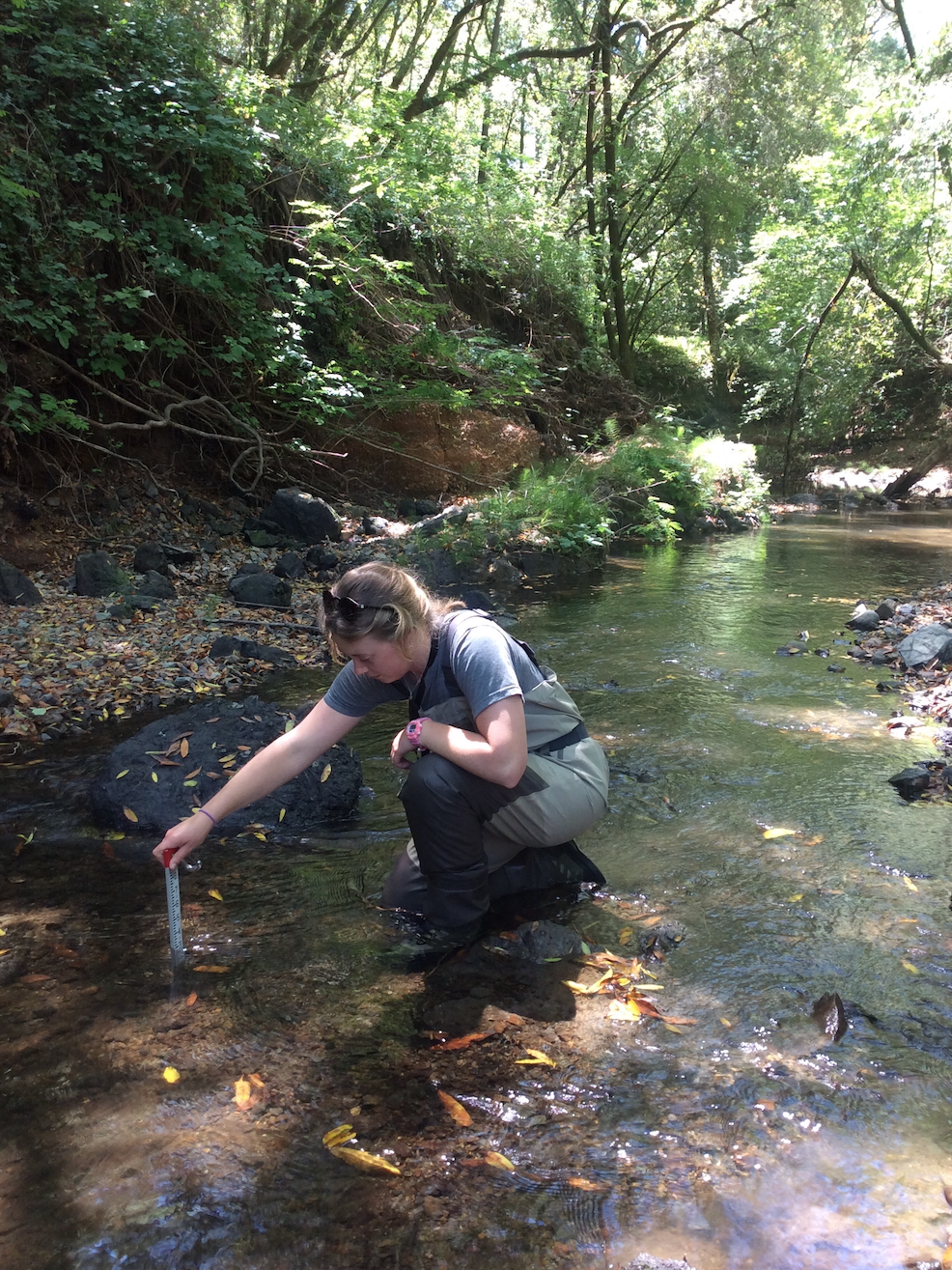By Daisy Schadlich
October 1, 2019
Many young salmon and trout do not survive the long dry season in California’s streams. In the Russian River basin, and elsewhere in our coastal watersheds, most often that’s due to lack of water availability. In a changing climate with inconsistent rainfall patterns and increasing pressure on our water resources, it’s no surprise that fish have a hard time getting what they need. Globally, 30-50% of streams go dry seasonally, and both the number of streams and the extent of intermittency is increasing with climate change. Coho salmon were recently pulled back from the brink of local extinction in the Russian River watershed and need a helping hand to survive our hot, dry summers.
 I was hired in May as a seasonal technician with California Sea Grant’s Russian River Salmon and Steelhead Monitoring Program to help conduct wetted habitat surveys. These surveys, also known as wet/dry mapping, spatially document where streams remain wet and where they dry up during the summer season. I’ve been collecting data on three high-priority coho streams on a biweekly basis; Dutch Bill, Green Valley, and Mill creeks. This is the third (and final) year that they are being monitored through a grant from the Wildlife Conservation Board. When I began this position in May, these streams still had too much water in them to survey safely! As it warmed up, though, the water level gradually dropped, leaving gaps between pools and, in some cases, stranded fish.
I was hired in May as a seasonal technician with California Sea Grant’s Russian River Salmon and Steelhead Monitoring Program to help conduct wetted habitat surveys. These surveys, also known as wet/dry mapping, spatially document where streams remain wet and where they dry up during the summer season. I’ve been collecting data on three high-priority coho streams on a biweekly basis; Dutch Bill, Green Valley, and Mill creeks. This is the third (and final) year that they are being monitored through a grant from the Wildlife Conservation Board. When I began this position in May, these streams still had too much water in them to survey safely! As it warmed up, though, the water level gradually dropped, leaving gaps between pools and, in some cases, stranded fish.
Wetted habitat surveys are relatively straightforward. A field partner and I begin at the mouth of a creek and walk upstream, stopping every five minutes to take water quality measurements and, as needed, to document dry and flowing tributaries. We use a tablet to map surface water conditions in the creek along the way as either “wet” or “dry” features and also measure discharge using an instrument that can capture flow down to the thousandth of a cubic foot per second. As streamflow recedes, the water temperature becomes more variable and the dissolved oxygen (DO) levels decrease, both of which influence fish survival. Measuring water temperature and DO over time at different points along the creek paints a really clear picture of how water quality is impacted by how much water is flowing, which changes dramatically as the season progresses.
As someone that grew up in the snow, I’ve always loved watching rivers swell in the spring and change over the course of the summer. It can be disheartening to see streams drying, but observing the changes in these creeks firsthand as the season has progressed and learning about the impact on salmonid survival is also one of the highlights of doing this work. It’s been a unique opportunity for me to become intimately familiar with a few important streams in this watershed and to see their annual transformation.
We share all of the data we collect with the public and with partners looking to better understand how they can help support salmon and steelhead recovery. Our data helps biologists plan fish rescues as creeks dry up and is being used by UC Berkeley researchers to develop a model to predict when and where drying occurs in these high-priority coho salmon streams. It also plays a critical role in guiding streamflow enhancement efforts, including flow augmentations. These augmentations, or releases, have proven to be incredibly successful in helping salmon and steelhead get through the summer. The extra water helps boost water quality and reconnect pools to allow fish to move through the river again. A little bit goes a long way!
To learn more, please visit the Wetted Habitat page on our website or delve into the data and check out the maps from this summer on our 2019 Summer Wetted Conditions Story Map.




